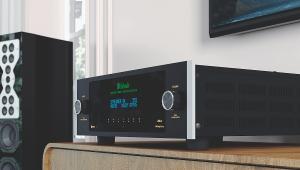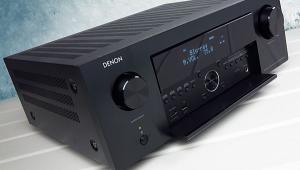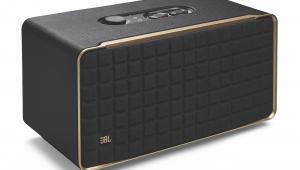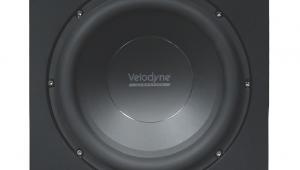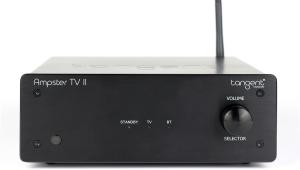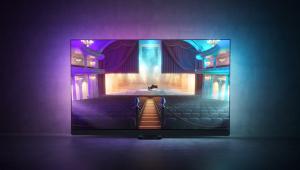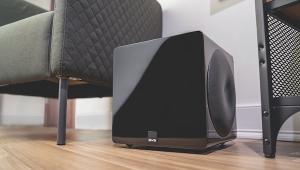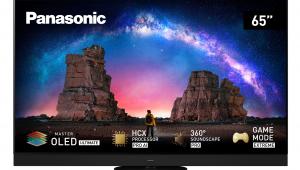Onkyo TX-RZ70 AV receiver review
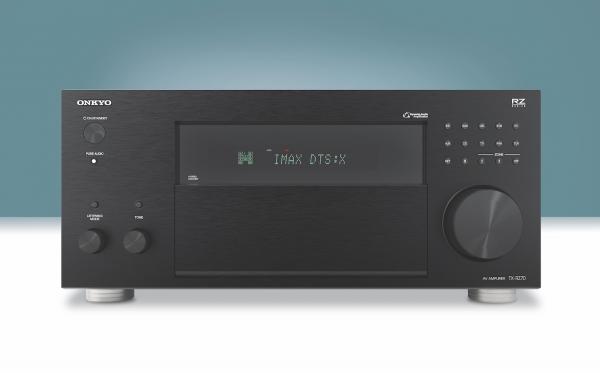
 Onkyo's amp aims to entice Jamie Biesemans with its 11-channel power, streaming features galore and two flavours of auto EQ
Onkyo's amp aims to entice Jamie Biesemans with its 11-channel power, streaming features galore and two flavours of auto EQIt was very quiet around Onkyo for the last few years, but an invigorating partnership between Sharp and the Premium Audio Company means the iconic Japanese brand is making a comeback. And the charge is being led by the TX-RZ70, an 11.2-channel AV receiver launched in 2023 at £3,099.
This model joins the nine-channel TX-RZ50 at the top of pile, while below it remain older models such as the venerable TX-NR696 and the TX-NR5100/6100, which launched in 2021. Presumably there's more on the way to build up a completely refreshed lineup, but for now, it's the TX-RZ70 that competes with high-end models from the likes of Denon, Marantz, Arcam and Yamaha.
Hefty contender
One way Onkyo seeks to distance the TX-RZ70 from rivals is via its broad feature set, which includes plentiful streaming options and a full licence for Dirac room correction, whereas nearly all other AV receivers that support Dirac are limited out of the box to adjustment below 500Hz, requiring extra outlay if you want to calibrate over the full frequency range. Only Arcam at present offers the same, including on the comparable 11.2-channel AVR11.
The TX-RZ70 also promises class AB amplification a cut above the rest, claiming 140W per channel into 8 ohm loads (albeit measured over two channels). This is backed up by a large power supply, contributing to the hefty 22kg weight of this unit. This is one obvious difference between the RZ70 and the RZ50, because otherwise the streamlined industrial designs of the two are very similar, including the abundant buttons that lurk behind the front-panel's drop-down door.
All of the six HDMI inputs on the receiver's rear are HDMI 2.1 compatible, catering to next-gen console and PC gamers alike with support for ALLM and VRR. There are legacy video inputs too, which is a boon for owners of retro gaming gear. The RZ70's three video outputs (two 8K/60, one 4K/60) support HDMI switching.
Clean and logical
You’d expect a feature-rich receiver to be equipped with extensive menus and a certain level of complexity, but that’s not the immediate impression you get when installing the TX-RZ70. Its interface displays crisply on 4K screens and projectors, and is clean and logical too, presenting ten main items and guiding you quickly to the specific option you're looking for. I like the separate 'quick menu' which displays over content when watching; this offers just the right options you might want to fiddle with, such as Dirac presets, channel levels and dialogue improvement.
Most of what you'd want in an AV receiver at this level is present, including speaker type selection for height channels, three-zone audio and bi-amping options for front and centre channels. Combined with its 11.2-channel pre-outs, this allows you to establish setups quite different from the 7.2.4 arrays that most will use with the receiver. Onkyo's no-nonsense UI philosophy might be light on informative explanations, but is effective in its use of sparse graphics.
One of the more unusual options you can find when delving into the speaker settings is a Klipsch Optimized Mode. This isn't surprising considering that Onkyo and Klipsch are now both under the same umbrella company, and the mode will certainly be handy if you own Klipsch's Reference Premier speakers. The receiver works fine with other speaker brands too, of course – you'll just have to fill in some of the settings yourself.

Like previous Onkyo receivers this one carries a 'Works with Sonos' label. Integrating the RZ70 into an existing Sonos system is therefore meant to be easier, although this is more involved than the label promises. The receiver isn't directly compatible with the Sonos software, but it can work together with a Sonos Port connected to one of the digital inputs. With this in place, you get basic control via the Sonos app.
There are few AVRs around with as many streaming options as this Onkyo model. Next to Chromecast, AirPlay 2 and bi-directional Bluetooth, there are built-in services, file playback and internet radio available, accessible either through the TV interface or the rather neat Onkyo Controller app.
The main streaming platform is DTS Play-Fi, however, which requires its own app – in fact, you can choose between the generic Play-Fi app or an Onkyo-branded one. Play-Fi has a lot to offer and has improved since its early days, but the interface remains cluttered and complex. I'm sure you can get used to it, but it just feels quite clunky.
Power, but with grace
The muscular abilities of the RZ70 were certainly put to use while driving a KEF R Series Meta five-channel surround setup, augmented with four DALI Alteco height speakers and a single ELAC Sub 2050. The KEF speakers need more oomph to deliver their most dynamic performance, and the TX-RZ70 delivered exactly that during the mass battles of Dune, and the second opening sequence in the streets of Matera from No Time to Die (both 4K Blu-ray).
The sudden explosion at the grave of Vesper Lynd, resounding over the Italian hills during the Bond flick, or the Hans Zimmer music blasting while the Atreides troops storm the Sardaukar in Dune, had real punch and body. These were the fast, dynamic thrills I was looking for.

This receiver certainly has enough power reserves to drive most loudspeakers (particularly of the sort it's likely to be partnered with), but it's not sheer power nor control which sets it apart. With even the maddest action scenes there was a slight touch of delicacy and airiness to be detected, which better reveals finer details into the mix. Definition is where the RZ70 really excels, certainly when combined with KEF's sweet Uni-Q-drivers, ably positioning sound effects in the broader surround space. This was noticeable in the classic Dolby Atmos demos, including the Horizon trailer, where the spaceships not only arced convincingly overhead but also had more texture than is usually the case.
This amplifier's detailed nature also made for a brilliant experience playing Starfield on the Xbox Series X. When exploring abandoned buildings, the soft voices of space pirates around the corner were positioned perfectly. And during an ensuing firefight, the TX-RZ70 had no qualms in shifting sound effects around the room – this being the main sound production difference between films and games: as your relative position changes, the FX have to move along with you.
Daunting Dirac
Room calibration has an important part to play when it comes to definition and SFX placement. Interestingly, just as on current Denon and Marantz devices, Onkyo lets you choose here between its own system (AccuEQ) and Dirac. Use the first of those if you aren't willing to invest more time in fine-tuning. Although Dirac rightly is celebrated and offers the best overall result, it comes with a learning curve. Onkyo has made it easier by offering app-based Dirac measurements, but using a standalone mic and a laptop with Dirac Live gives you more control.
Playing the lengthy introduction to Alfonso Cuarón’s Roma, the TX-RZ70 achieved very good results with the 'old' AccuEQ. The Dolby Atmos sound design of this Oscar-winning drama is immaculate, with a lot of subtle situational sound creating a sonic backdrop to the mundane life of its lead character. Even with the quicker and easier AccuEQ calibration, music from the radio and the chirping of birds was deftly portrayed as Cuaron's camera glides around.
Yes, when revisiting this clip with Dirac enabled the surround field appeared more seamless and had greater clarity, but AccuEQ still showcases the TX-RZ70's excellent sonic abilities.
HCC Verdict: 5/5
Onkyo TX-RZ70
Price: £3,099
onkyo-av.com
We say: Onkyo's big-boy receiver is a thrilling, detail-rich cinematic performer, and impressively accommodating when it comes to sources both wired and wireless.
Specifications
DOLBY ATMOS: Yes DTS:X: Yes IMAX ENHANCED: Yes MULTICHANNEL INPUT: No MULTICHANNEL PRE-OUT: Yes. 11.2 MULTICHANNEL OUTPUT (CLAIMED): 7 x 140W (into 8 ohms, two channels driven, 20Hz-20kHz MULTIROOM: Yes. Zone 2/3 HDMI: Yes. 7 x inputs; 3 x outputs AV INPUTS: 4 x digital audio (2 x optical and 2 x coaxial; 4 x analogue stereo audio; composite/component video) DIMENSIONS: 435(w) x 201.5(h) x 480(d)mm WEIGHT: 22.2kg
FEATURES: THX Certified; (20Hz-20kHz) with app setup; AccuEQ calibration; dual subwoofer outputs; MM phono stage; Ethernet; Wi-Fi; two-way Bluetooth; tone controls; HDMI 2.1 on six inputs; Apple AirPlay 2; Chromecast; DTS Play-Fi; Onkyo Controller app; 192kHz/24-bit ESS DAC; Dolby Vision and HDR10+ passthrough; VRR and ALLM compatible; USB; RS-232
 |
Home Cinema Choice #351 is on sale now, featuring: Samsung S95D flagship OLED TV; Ascendo loudspeakers; Pioneer VSA-LX805 AV receiver; UST projector roundup; 2024’s summer movies; Conan 4K; and more
|




